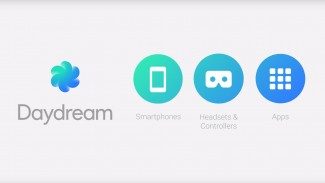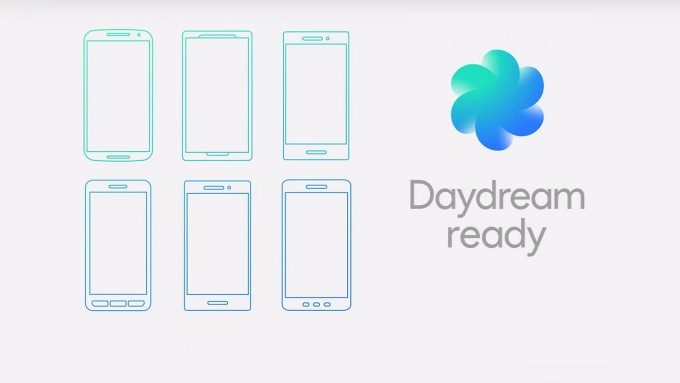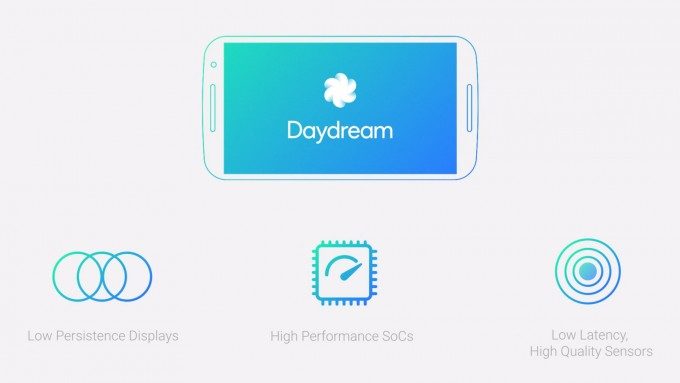Google’s ambitious Daydream VR platform for Android hinges on a combination of hardware and software to enable a high quality VR experience. To ensure the desired level of performance, Google will certify phones of a certain minimum specification as ‘Daydream Ready’. But the company says that even today’s top phones are unlikely to qualify for the title.
At I/O 2016 last week, Google’s VR chief Clay Bavor introduced the ‘Daydream‘ Android VR platform. The branding is an umbrella which encompasses specially designed phones, headsets, and applications which work together to create a high quality mobile VR experience on Android, one that we suspect will rival Samsung’s bar-setting Gear VR.


With Daydream Ready smartphones promised to hit the market this Fall, we wondered whether any devices already released (or will be released prior to the first Daydream smartphones) would meet the bar set by Google, and possibly be retroactively branded as Daydream Ready.
Unlikely, says Bavor, who tells Road to VR that those interested in VR on Android should hold off on that tempting upgrade.
“I can tell you that there will most likely not be any ‘retroactively’ Daydream-ready phones,” Bavor says. “We want to hold a very high quality bar, and for that to happen all the components need to be just right. So, to VR fans, I would say, hold off for a few months to get your next phone… and get a Daydream-ready phone.”
Interestingly, Google actually recommends the Nexus 6P as the phone of choice for the DIY Daydream dev kit, however it seems that even it won’t officially make the grade when it comes to the Daydream Ready designation.
What’s in a Daydream Ready Phone?
At I/O 2016, Google announced eight initial partners working on Daydream Ready smartphones for Android VR, some of which will see release dates starting this Fall. The company hasn’t made publicly available the precise Daydream Ready specifications which make a smartphone eligible, but they did give an overview.
High Performance Sensors
First is of course the sensor package in the phone. Every modern smartphone has a set of sensors inside which is used to tell the orientation of the device. This is useful for auto-rotation and for some basic mobile gaming. But for a great VR experience, the sensor inside needs to not only be high performance, but also highly calibrated. This is essential to enabling low-latency, high accuracy headtracking.
High Density, Low-persistence Displays
High resolution displays mean less noticeable pixels when you magnify the screen through lenses for VR. But density isn’t the only thing that makes a screen great for VR. Having an ultra-high refresh rate is necessary to enable a display technique called low-persistence which significantly reduces motion blur during head movement. All the top VR systems use low-persistence, and it seems Google plans to make it a requirement for Daydream Ready smartphones.
Android N
The next version of Android, codenamed ‘N’ is the first with core VR features built in. Daydream will require smartphones to run Android N as the software comes with an important ‘VR Mode’ which balances the device’s processing power for sustained performance over long periods in an effort to keep from overheating under the heavy processing demands imposed by virtual reality. Google says that Android N natively integrate important parts of the Android user-experience into VR; things like notifications and phone calls will be gracefully handled inside of virtual reality rather than interrupting your experience.
Powerful, Efficient Processors
And of course, powerful processors. Great VR is a demanding task that requires much more performance than your usual mobile application. Most mobile VR experiences must be output at 60 FPS and rendered stereoscopically in real time (not to mention at a very high resolution). A Daydream Ready phone needs not only a powerful CPU but GPU as well, and those which won’t overheat themselves too quickly under load.


